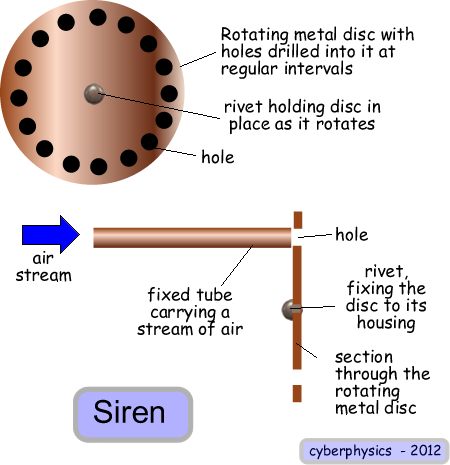The Siren The siren is a device for determining the absolute frequency of a sound. It was first described in scientific literature by the French physicist, Baron Charles Cagniard de la Tour (1779-1859) in 1819.
A disc has a regular pattern of holes cut into it, near the rim. This disc is rotated - early ones were rotated by hand via a mechanical crank system, later ones were rotated by an electrical motor. A stream of air is directed at the rotating disc so that the air stream is concentrated at the part of the disc where the 'holes' will appear as the disc rotates. When the air stream is directed at a hole, the air passes through to the other side of the disc. When the pathway for the air is blocked the air cannot pass through. This results in short periodic blasts of air being produced instead of a steady air stream. The rate at which the 'blasts of air' are formed is the frequency of the sound that is produced. The frequency of the sound produced is controlled by the rate of rotation of the disc, and the number of puffs produced in one rotation. That will be equal to the number of holes around the disc edge. let
In each full rotation of the disc there will be H vibeations of the air (puffs) Therefore the number of vibrations in one second will be HR and the frequency of the sound produced willl be HR Hz Some sirens have one row of holes, while others have several rows of holes and can sound one or more notes at the same time - by moving the air pipe position..
|
Follow me...
|






